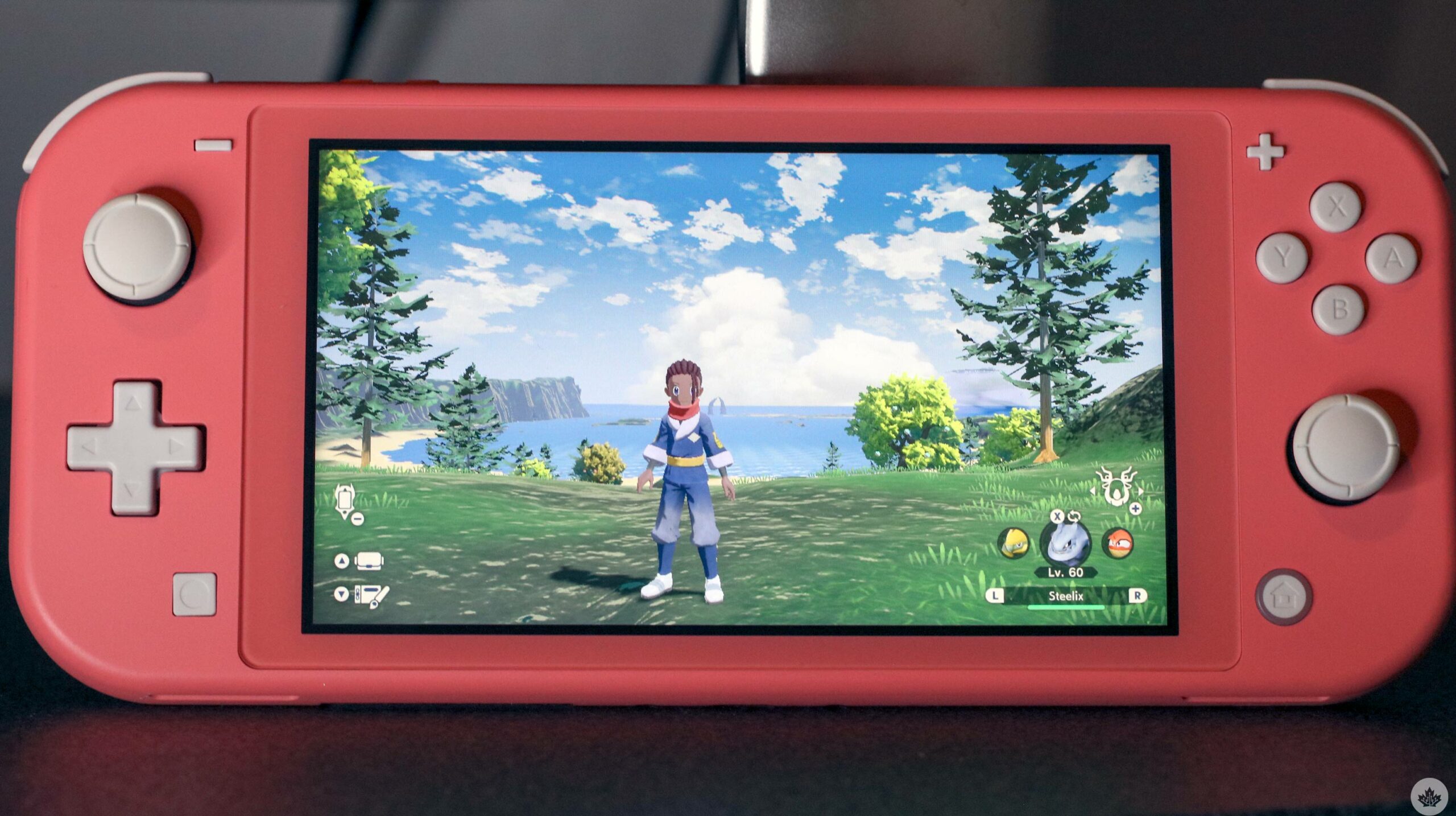
Pokémon Legends: Arceus is the latest entry in Game Freak’s long-running line of Pokémon games.
Since 1998, the developer has launched 19 games (more if count you both titles in each pairing), and I’ve played 18 out of the 19 of them (because what even is Pokémon Quest?). With this in mind, out of every Pokémon game I’ve played, Pokémon Legends: Arceus strays from the series’ formula the most.
While I wasn’t sure what to expect going into the game, I walked away from the experience impressed with the main story and this new take on the series.
Pokémon Legends: Arceus is set in the ancient Sinnoh region back when it was called Hisui. In this era, most people don’t interact with Pokémon and look at them as untamable wild animals. In Arceus, it’s your job to tame Pocket Monsters and learn more about them for the people of Jubilife Village. You’ll work for the Survey Corps and catch ’em all to fill out the first-ever Pokédex for Professor Laventon.
Hisui region
I’ll get this out of the way first: the least attractive aspect of Pokémon Legends: Arceus is its visuals.
It’s worth noting that I played the title on the Nintendo Switch Lite’s 720p screen, so it’s possible the game could look better on a 1080p TV set. That said, resolution isn’t everything, and I doubt that the additional pixels would solve the game’s less than stellar visuals.

Graphically, if you compare Arceus to other modern, triple-A titles, you’ll be very disappointed — even with the Switch’s underpowered hardware power in mind. For example, older Switch titles like The Legend of Zelda: Breath of the Wild and Luigi’s Mansion 3 look far better than Arceus. That said, it’s important to note that Legends: Arceus is a Pokémon title, and even though it isn’t as graphically impressive as other games, I liked its visual style. In a sense, the stripped-back aesthetic fits the Pokémon series perfectly since a world with too much detail wouldn’t work well with the more cartoony art style of individual Pokémon.
It’s not just the overall world that lacks personality, either. Sometimes, I encountered Pokémon in the distance that would glitch in and out. That said, the experience isn’t terrible and is better than what I encountered with Pokémon Sword and Shield‘s ‘Wild Area.’ The graphical quality also seems to degrade when you’re in caves, though thankfully, they aren’t common in Arceus.
More differences than similarities

Pokémon Legends: Arceus breaks the mould and changes the Pokémon formula more than ever before.
For example, there are no Gym badges to collect, no Elite Four to defeat, and your ultimate goal isn’t to become the Champion. Further, Pokémon Legends: Arceus ditches TMs and HMs, Pocket Monsters lack abilities, some moves do different things, and you can equip moves your creatures have previously learned on the fly. This means you can look at the moves your Pokémon once knew and shift them around in and out of battle. You can also easily Move Tutor certain moves and swap them in and out. The process of evolving Pokémon is even a little different and involves you looking through your items/Pokémon menu.
Battling is also not quite what I expected. By pressing the ‘Y’ button, you’re able to pull up the turn order. Typically in Pokémon games, you and your opponent go back and forth in a turn-based fight, but in Arceus, the experience is a bit different. Moves like ‘Quick Attack’ enable certain Pokémon to make two actions in a row. Additionally, there are two new ‘Styles’ of moves: ‘Agile’ and ‘Strong.’ Agile Style moves attack quicker and sometimes enable the user to attack twice in quick succession, but they do less damage and use more PP. On the other hand, Strong Style does more damage but allows the opponent to attack twice and uses more PP. This system can sometimes lead to rather unexpected situations. For example, I experienced a three-on-one battle where three wild Pokémon attacked my Pocket Monster five times before I finally got a move in.
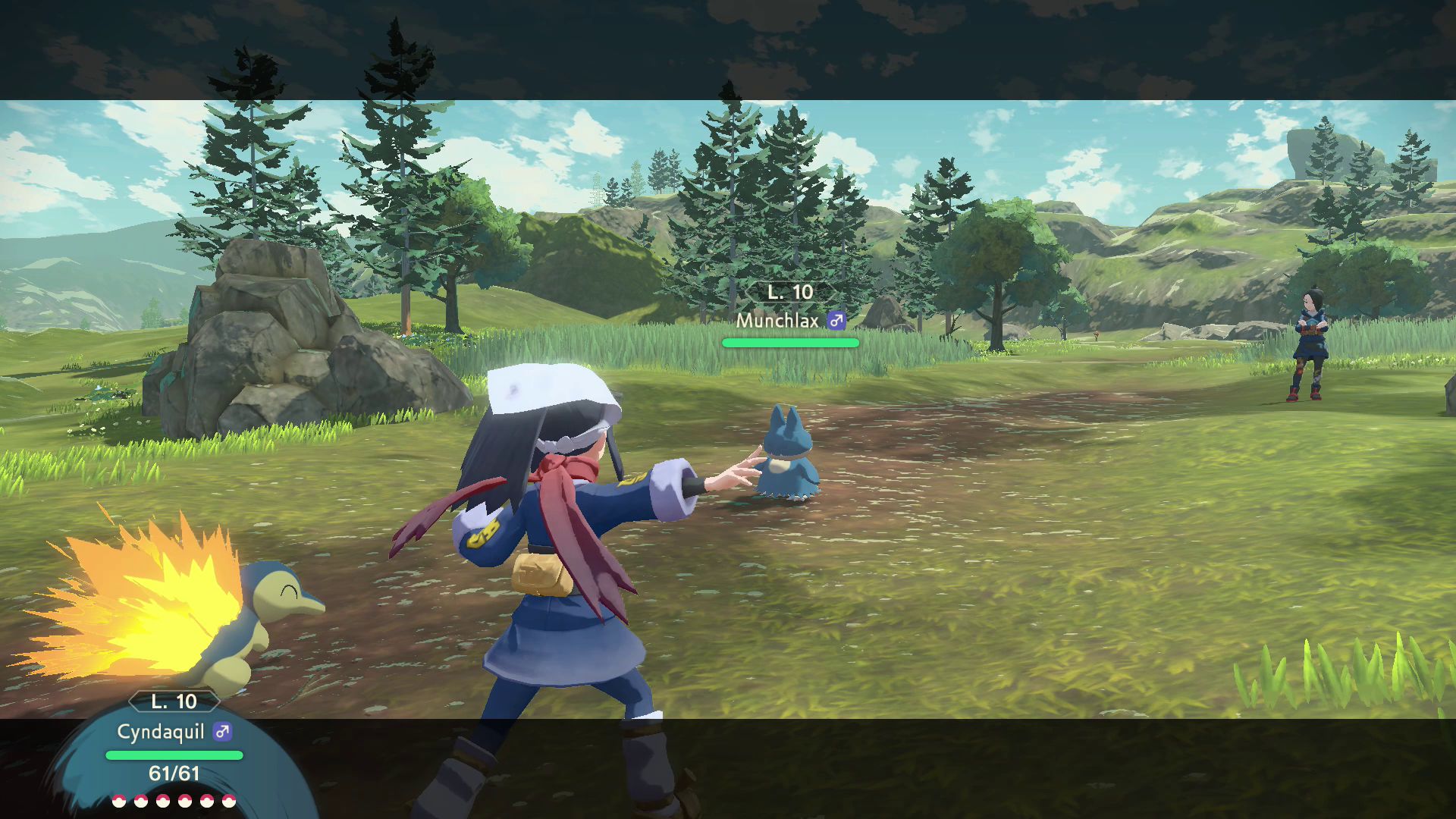
In Legends: Arceus, you’re also able to switch out Pokémon without losing a turn. When you’re battling another trainer and defeating one of their Pokémon, you no longer get the chance to switch out one of your Pokémon to prepare for it (this is also the case in player vs. player battles). Your character can even move around during the battle, allowing you to take it in from various angles.
I like these changes to the series’ typical formula because they bring a much-needed new element to Pokémon battles.
While Pokémon Legends: Arceus core gameplay focuses on finding new Pokémon and filling out your Pokédex, there are more trainer vs trainer battles in the game than I expected. Pokémon trainer battles are my favourite experience in Game Freak’s titles, so I’m happy they were incorporated in Arceus in a significant way.
Even catching Pokémon in this game is different as you’re able to hide and crouch in the grass and throw your Pokéball at an unexpecting Pokémon. Failing to capture Pokémon results in them becoming angry and running at you, or they’ll get scared and run away. If they get angry, the only way to catch them is by starting a Pokémon battle, which you’ll do by throwing one of your Pokémon out beside it.
Jubilife Village
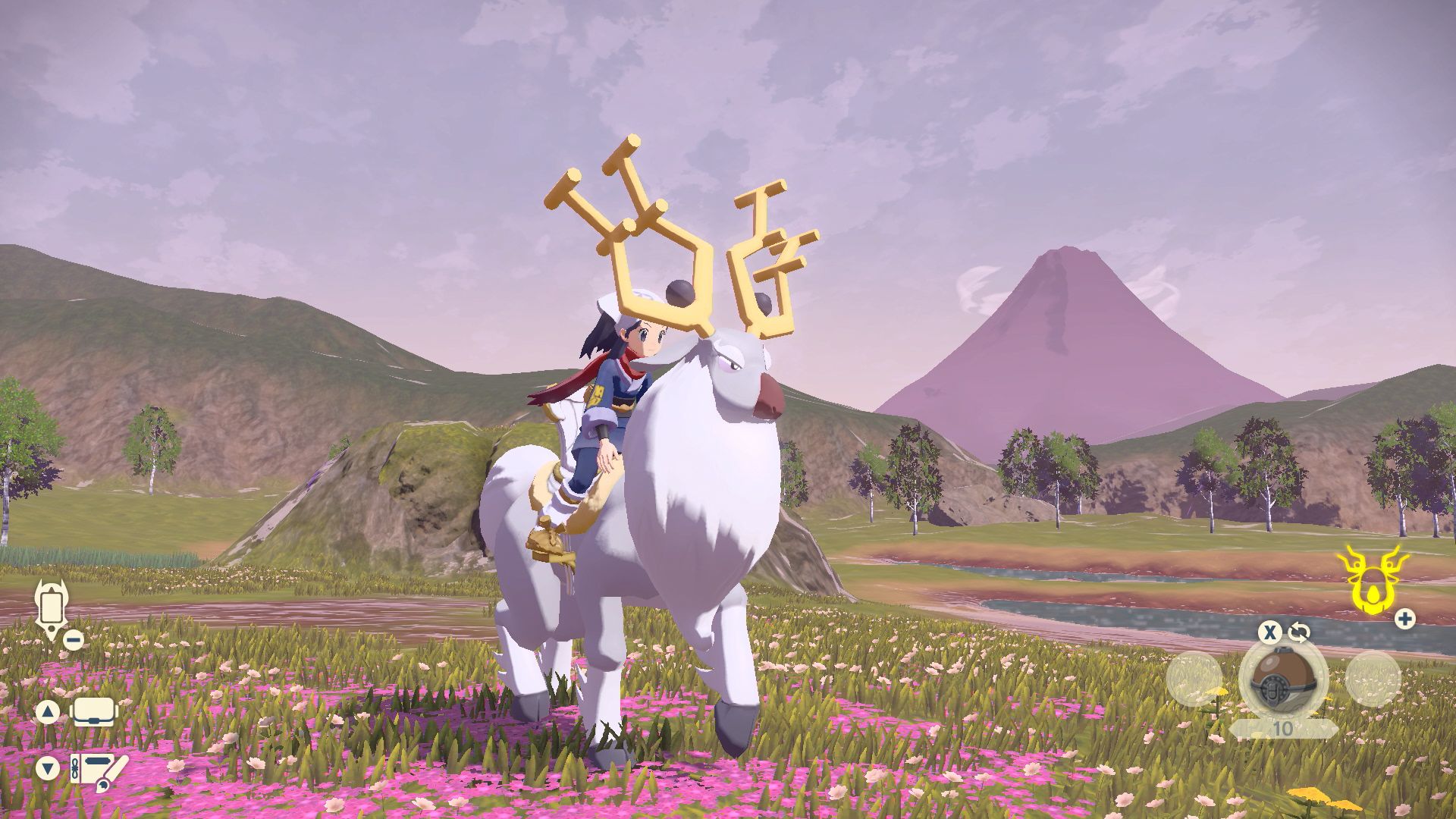
In Pokemon Legends: Arceus, the world isn’t wide open and instead works similarly to Monster Hunter games. You can’t walk or fly around the entire region and you will have to return to Jubilife to travel to different areas.
It’s annoying to have to go back to Jubilife Village repeatedly and I quickly found myself wishing the game’s world was more open. However, each of Arceus’ regions is quite large, and when riding a Pokémon, you’re able to go back to earlier locations and uncover hidden areas. For example, you can use Hisuian Braviary’s ability to fly and Basculegion can surf across the ocean, allowing you to find new Pocket Monsters to capture.
In Pokémon Legends: Arceus, you’re able to track your progress in two different ways: how many Pokémon Nobles you’ve calmed and how many stars you’ve gathered within the Survey Corps. These stars indicate your level in the Survey Corps, the organization you work for in Arceus. You earn more stars by catching new Pokémon, evolving them and seeing them use specific moves. Even after finishing the game’s main story, I’ve only collected six of the ten stars. This means there are a lot more Pokémon for me to catch, evolve and learn about.
Even though this is abnormal for a Pokémon title, I still enjoy this structure and liked that there are always new goals that I needed to complete.
Noble Pokémon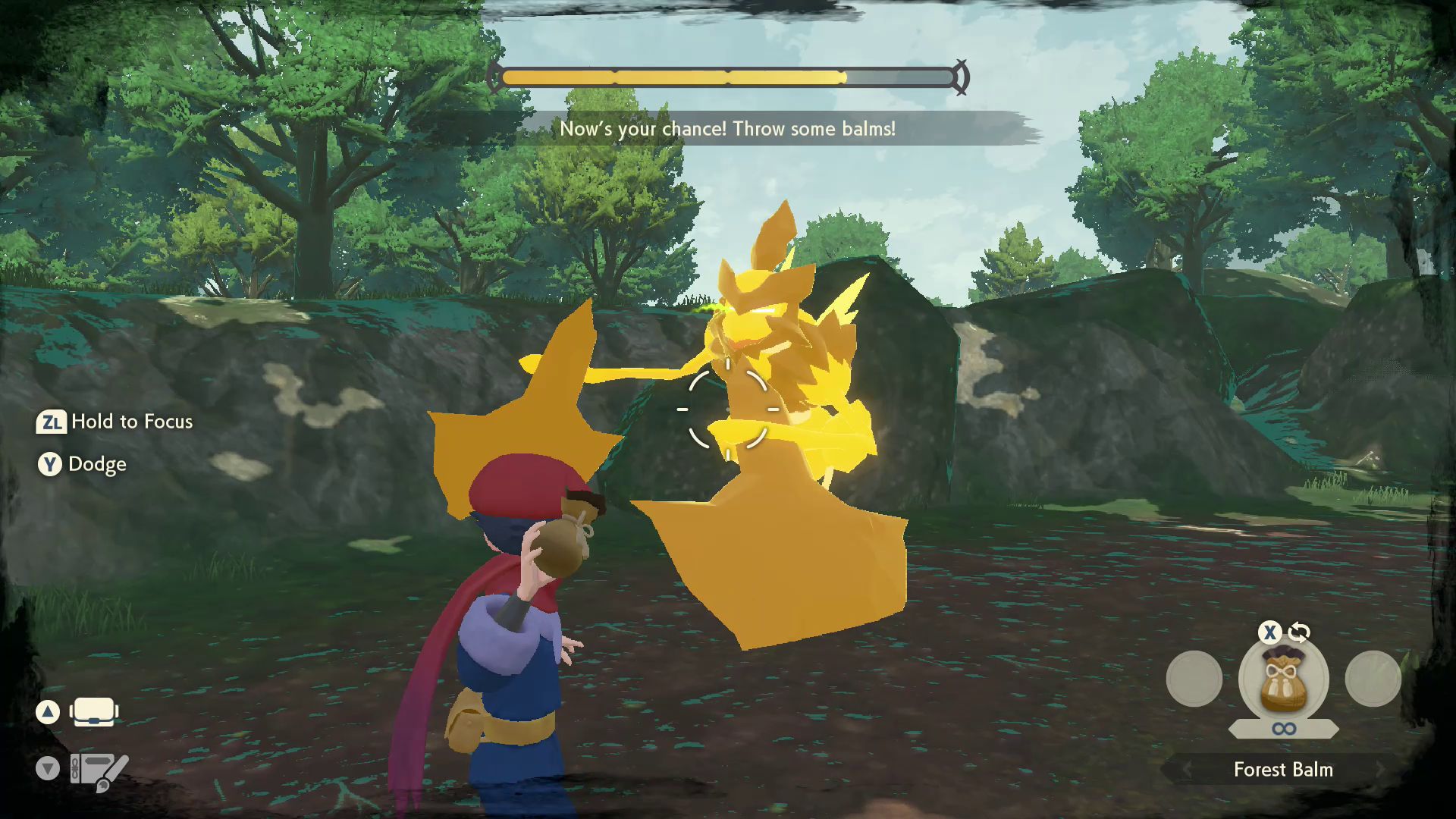
One of the key aspects of the game is calming Noble Pokémon. In Pokémon Legends: Arceus, Noble Pokémon are unique Pocket Monsters within a region that have been struck by special lightning that makes them bigger. They’re also usually quite angry. You’ll need to throw balms and then battle the monsters to defeat them. In a way, these encounters feel like boss battles. As you progress through the game, calming Noble Pokémon becomes more complex, resulting in me fainting at least once or twice before successfully capturing the creature.
“Pokémon Legends: Arceus is different from nearly every previous Pokémon game, and this is a good thing.”
Though I welcome the challenge of Noble Pokémon, I wish they offered more of a payoff as I wanted to capture these Pocket Monsters for myself.
These encounters reminded me of 2016’s Pokémon Sun and Moon, which also ditched the standard gym system, and instead, trainers participated in Island Trials. In a way, Legends: Arceus is very similar to Pokémon Sun and Moon, so if you’re a fan of those titles, you might find a lot to like about this latest entry in the series.
Requests and Missions

While the people of Jubilife Village don’t have Pokémon themselves, they want to know more about the creatures. The town’s residents ask you to learn more about specific Pokémon, gather crafting materials or even catch a creature for them, leaving you with various tasks to complete.
Most requests require you to capture a Pokémon or learn about one by completing their corresponding Pokédex entries. Other examples include encountering a Pokémon that uses a specific move multiple times, fighting against and defeating a creature with a super-effective move, finding certain crafting items and more.
There are tons of NPC requests that offer a variety of worthwhile rewards (I currently have 93 available to me at the moment). Some rewards are really worth completing. For example, doing one for the hairstylist in town opens up more hairstyles to try out. There are also quests tied to getting access to an evolutionary stone.
While I like these fetch quests, the Missions list was truly helpful when it was time to get back to Arceus‘ main story.
Hisuian Braviary
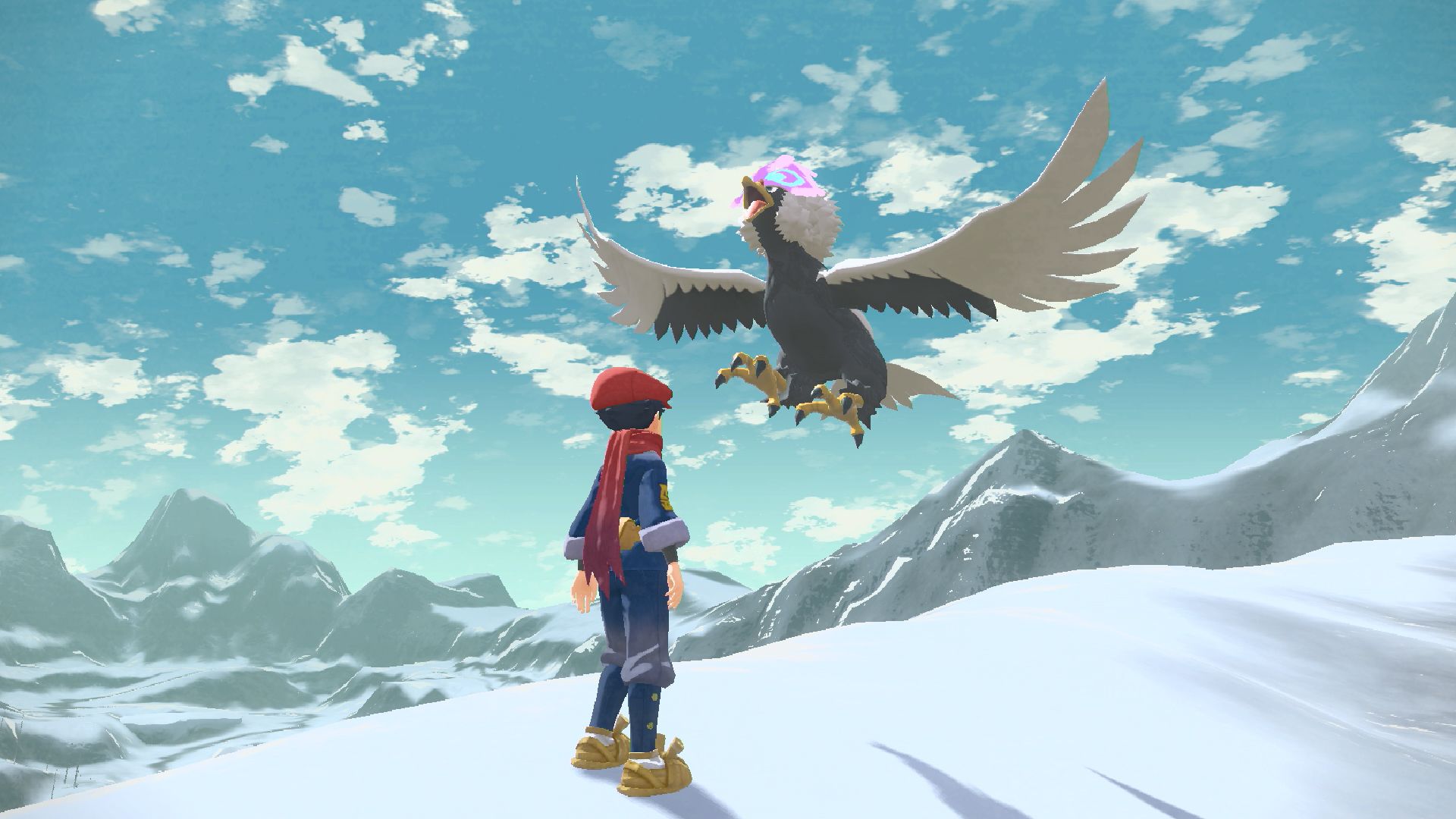
Pokémon Legends: Arceus is different from nearly every previous Pokémon game, and this is a good thing.
While I was at first enamoured with Pokémon Brilliant Diamond and Shining Pearl, that love faded quickly, as I found the titles too similar to the classic games they replicate. Legends: Arceus is the opposite of this, and while it doesn’t offer an entirely new region with hundreds of new Pokémon, it changes the series’ now-expected formula just enough to make it feel fresh again.
While my favourite part of Pokémon games are usually trainer battles, Legends: Arceus kept me entertained in different ways. From Noble Pokémon and discovering new regional variants to filling out requests and flying around on Hisuian Braviary, I had a lot of fun with Legends: Arceus.
Pokémon Legends: Arceus releases on January 28th and is available for $79.99 at Best Buy and several other retailers.
MobileSyrup utilizes affiliate partnerships. These partnerships do not influence our editorial content, though we may earn a commission on purchases made via these links that helps fund the journalism provided free on our website.
MobileSyrup may earn a commission from purchases made via our links, which helps fund the journalism we provide free on our website. These links do not influence our editorial content. Support us here.


